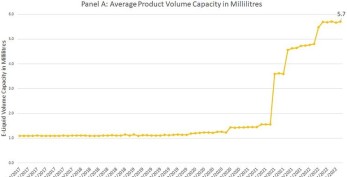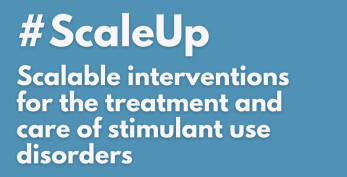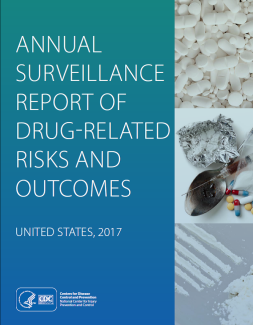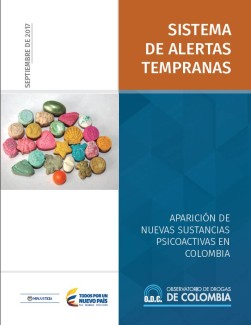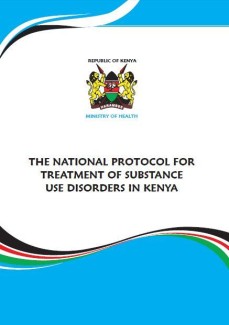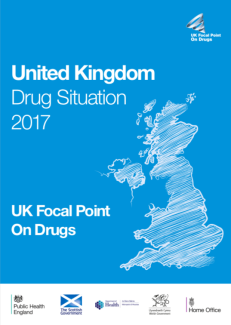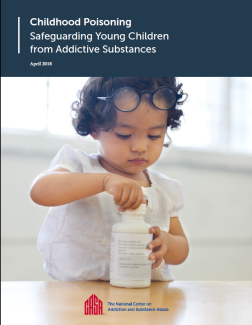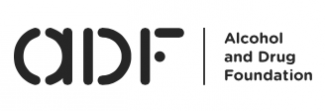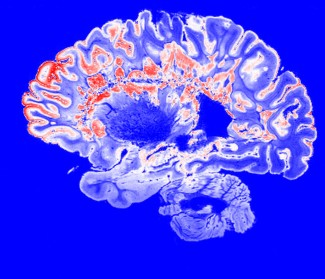Search
Public Health
The intersection of substance use with broader public health concerns.
Annual Surveillance Report of Drug-Related Risks and Outcomes
This report presents information on four types of outcomes from the four different data sources:
- Opioid prescribing, 2006-2016, from QuintilesIMS Health®
- Drug use, misuse, and substance use disorder, 2014-2015, from the National Survey...
Орташа табысы бар 13 елде 500 млн. ер темекі шегетіндер арасында темекі бағасының өсуінің денсаулық, кедейшілік және қаржылық салдары
Реферат
Мақсаты: Сигареттердің нарықтық бағасының 50%-ға өсуінің денсаулыққа, кедейшілікке, қаржылық қорғауға әсерін зерттеу.
Дизайны: Купелік модельді зерттеу.
Баптау: орташа табысы орташа 13 ел, жалпы сомасы екі миллиард ер адам.
Қаты...
Алкогольді тұтыну тәуекелінің шекті мәндері: 83 перспективалық зерттеулерде 599 912 ағымдағы сусындар бойынша жеке қатысушының деректерін жиынтық талдау
Түйіндеме
Аясы
Алкогольдi тұтыну үшiн ұсынылатын қауiпсiздiгi төмен лимиттер әртүрлi ұлттық әдiстемелiк нұсқаулар бойынша едәуiр өзгерiп отырады. Барлық себепті өлім-жітім мен жүрек-қан тамырлары аурулары бойынша ең төмен қауіп-қатерге...
Алкогольді қауіпсіз пайдалану үшін шекті мәндерді төмендету қажет болуы мүмкін
Түйіндеме
Ішімдік ішушілердің денсаулығына төмен қауіп төндіретін алкогольді тұтыну деңгейі бойынша әдістемелік нұсқауларды, әдетте, эпидемиологиялық зерттеулердің мета-талдауларына негізделген көптеген елдер қамтамасыз етеді.1-3 Алайда...
Current Marijuana Use by Industry and Occupation — Colorado, 2014–2015
Summary
What is already known about this topic?
Eight states, including Colorado, have legalized recreational marijuana use among persons aged ≥21 years. The association between marijuana use and occupational injury is of public health...
Aparición de Nuevas Sustancias Psicoactivas (NSP) en Colombia
El Ministerio de Justicia y del Derecho creó el Sistema de Alertas Tempranas (SAT) de Colombia, con el fin de monitorear y alertar oportunamente la aparición de NPS y cambios en los patrones de consumo de drogas, como parte de las funciones...
Индонезияда бүлінген ликер-арақтан 80-ге жуық адам қаза тапты
ӘЛИ КОТАРУМАЛОС бойынша
2018 жылғы 10-10-ға дейін
ДЖАКАРТА, Индонезия (АП) — Индонезия билігі уытты етікші ликер-арақ өнімін ішуден көп адам қайтыс болды деп есептейді, осы айда ақылын 80-ге дейін көтеріп, заңды алкогольдің жолын кесу...
Substance Use amongst University Students in Ethiopia
A study published in the Substance Abuse Treatment, Prevention, and Policy journal details the prevalence of substance use amongst students from Debre Berhan University in Central Ethiopia.
Substance use behaviors of 695 students were...
The National Protocol for Treatment of Substance Use Disorders in Kenya
Substance (Drug) Abuse is increasing in Kenya and especially among the youth. Current statistics indicate that more than half of drug users are aged 10-19 years. Most studies done in the country indicate that the commonly used drugs are...
United Kingdom Drug Situation: Focal Point Annual Report
The United Kingdom Focal Point on Drugs (UK Focal Point) 2017 report is available on the UK government's digital portal.
Based at Public Health England, the UK Focal Point is the national partner of the European Monitoring Centre for Drugs...
Smoking Linked to Irregular Menstruation and Early Menopause
A study exploring the factors leading to menstrual cycle irregularity and menopause has discovered smoking may contribute to irregular menstrual cycles. The research, carried out in Korea, also found an association with the early initiation...
Childhood Poisoning: Safeguarding Young Children from Addictive Substances
BACKGROUND
As a result of America’s current addiction epidemic, babies and pre-school age children are being accidentally exposed at unacceptably high rates to toxic, addictive substances including nicotine, alcohol, caffeine, prescription...
Impact of Binge Drinking in Adolescence. Are we doing it right?
Abstract
Nowadays, one of the most prevalent patterns of alcohol consumption is called binge drinking (BD). In 2015, the European School Survey Project on Alcohol and Drugs (ESPAD) Group estimated that about 35% of adolescents of 15-16...
Policy Approaches for Regulating Alcohol Marketing in a Global Context: A Public Health Perspective
Abstract
Alcohol consumption is responsible for 3.3 million deaths globally or nearly 6% of all deaths. Alcohol use contributes to both communicable and noncommunicable diseases, as well as violence and injuries. The purpose of this review...
Drug Facts from the Australian Alcohol and Drug Foundation
Digital health information about the risks of drugs is available through the Australian Alcohol and Drug Foundation (ADF) website. The searchable online database, Drug Facts, features information about a range of substances which may pose...
Childhood Predictors of Lung Function and Future COPD Risk
A study published in the Lancet details the discovery of a link between the respiratory disease Chronic Obstructive Pulmonary Disease (COPD) and childhood exposure to parental smoking or childhood illnesses, such as asthma, bronchitis...
Excess Placental Secreted Frizzled-Related Protein 1 in Maternal Smokers Impairs Fetal Growth
Abstract
Maternal cigarette smoking during pregnancy remains one of the most common and preventable causes of fetal growth restriction (FGR), a condition in which a fetus is unable to achieve its genetically determined potential size. Even...
Effects of Dietary Antioxidant Vitamins on Lung Functions According to Gender and Smoking Status in Korea
Abstract
Objective: Cigarette smoke-induced oxidative stress plays an important role in the pathogenesis of chronic obstructive pulmonary disease (COPD). Dietary antioxidants are thought to prevent smoke-induced oxidative damage. The aim...
Rise in Glutamate Levels Can Be Used to Predict Drug High
A study funded by the National Institute on Drug Abuse (NIDA) explores the action of psychostimulant drugs on glutamate, one of the most abundant neurotransmitters in the human body.
Drugs with a stimulant effect are commonly prescribed...
Association between Receptivity to Tobacco Advertising and Progression to Tobacco Use in Youth and Young Adults
A study funded by the National Institute on Drug Abuse (NIDA) has found an association with young people being exposed to adverts for electronic cigarettes (e-cigarettes) and taking up smoking later in life.
The study followed 10 989...
Share the Knowledge: ISSUP members can post in the Knowledge Share – Sign in or become a member


